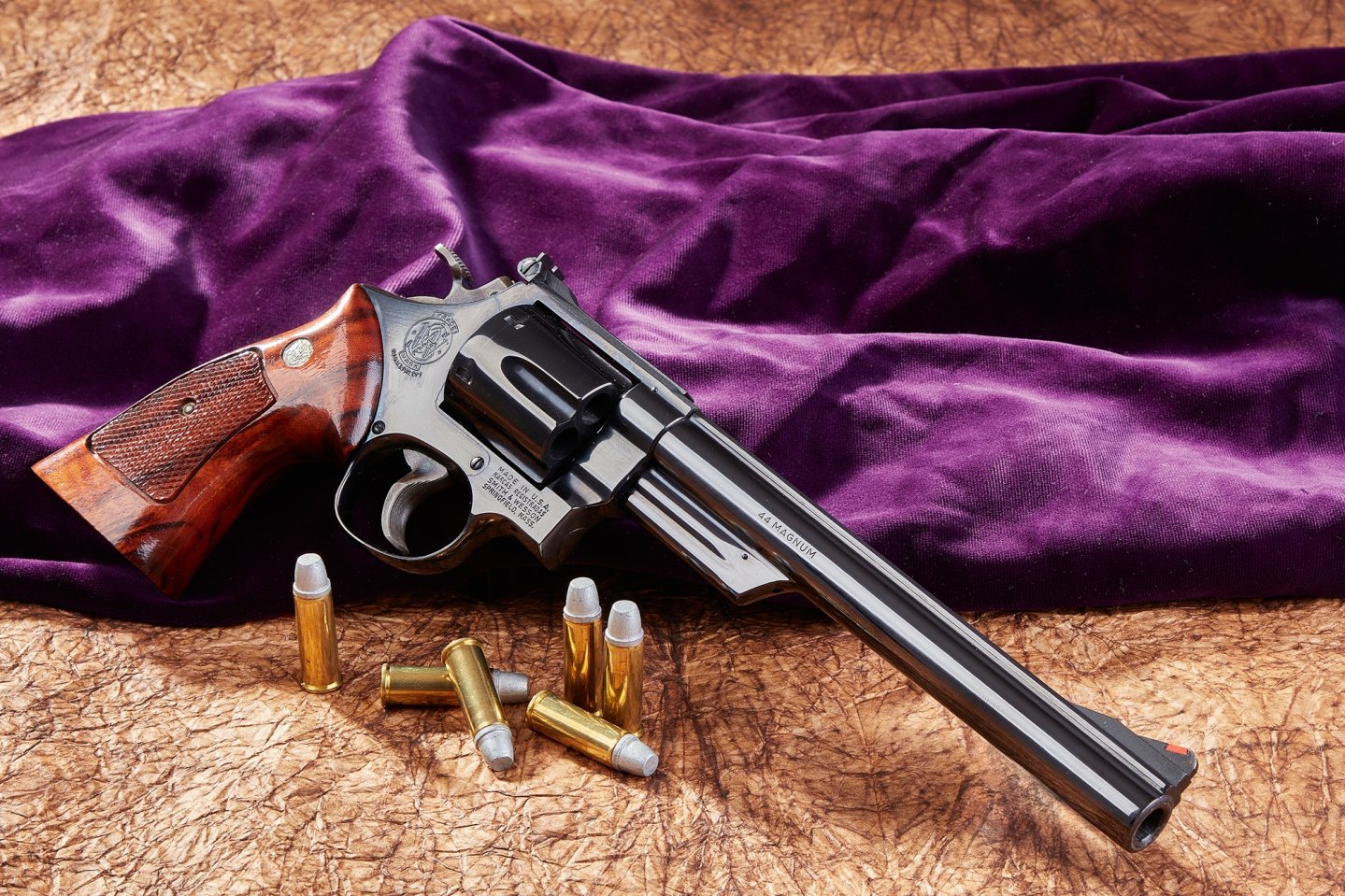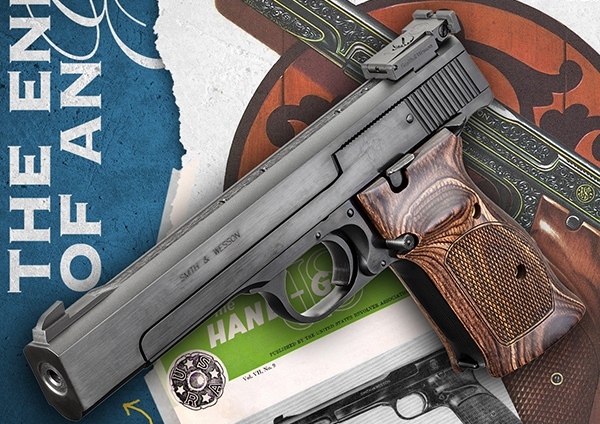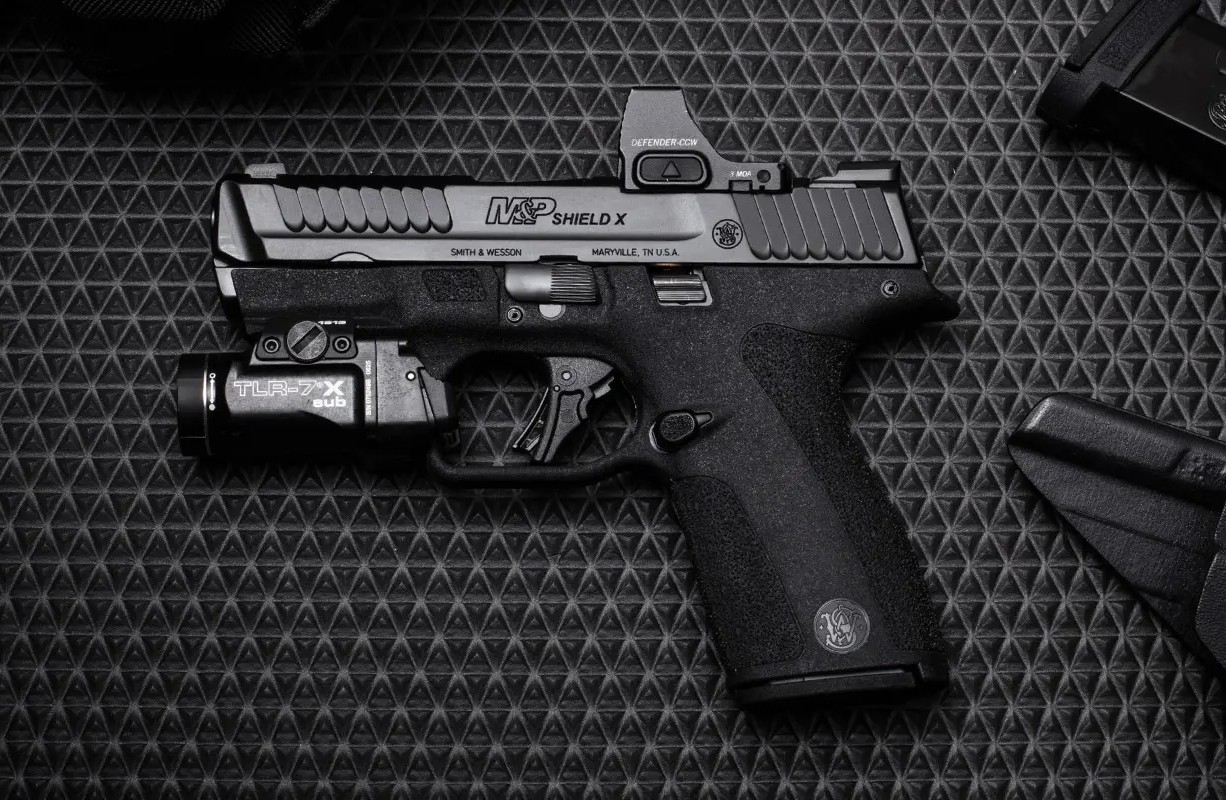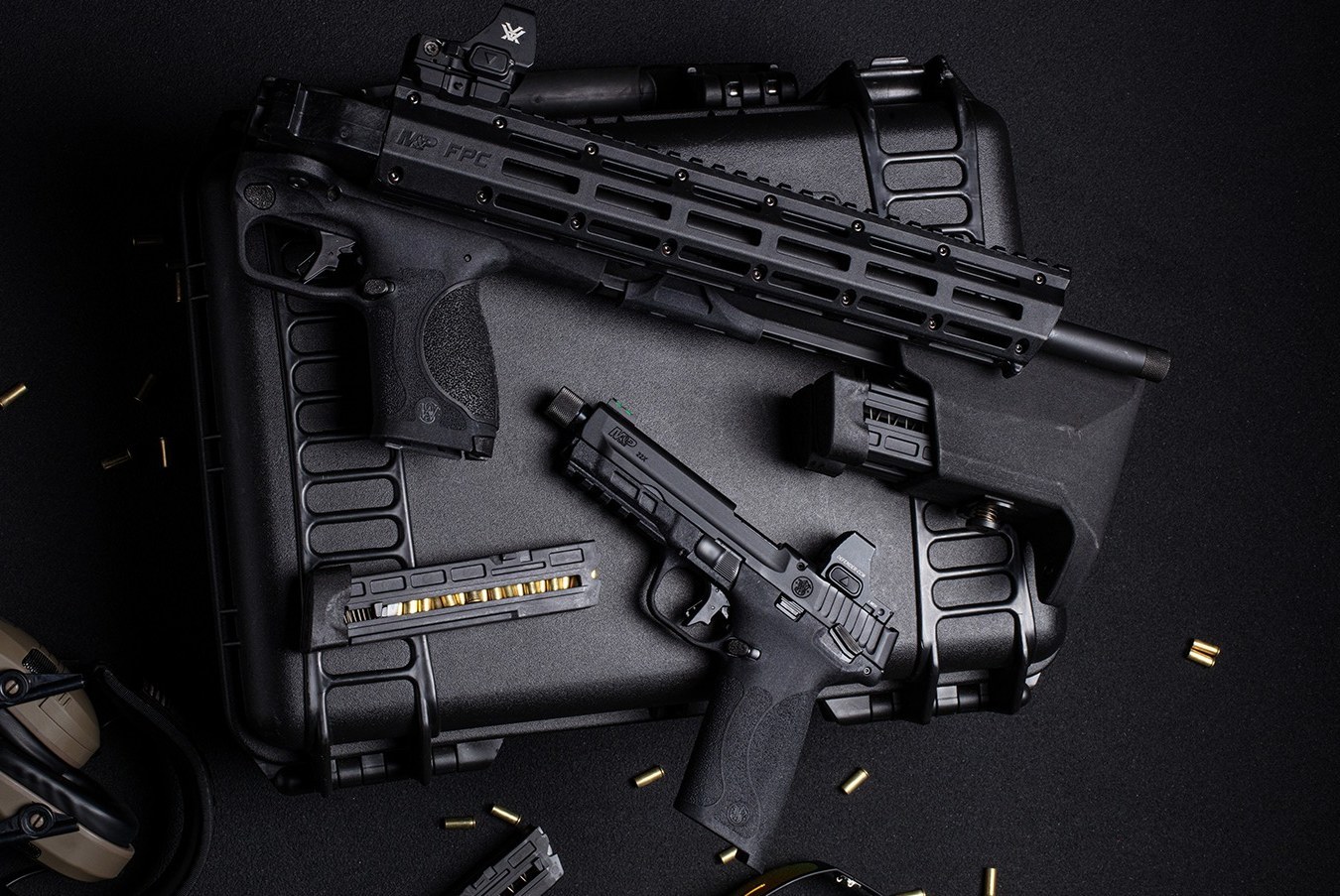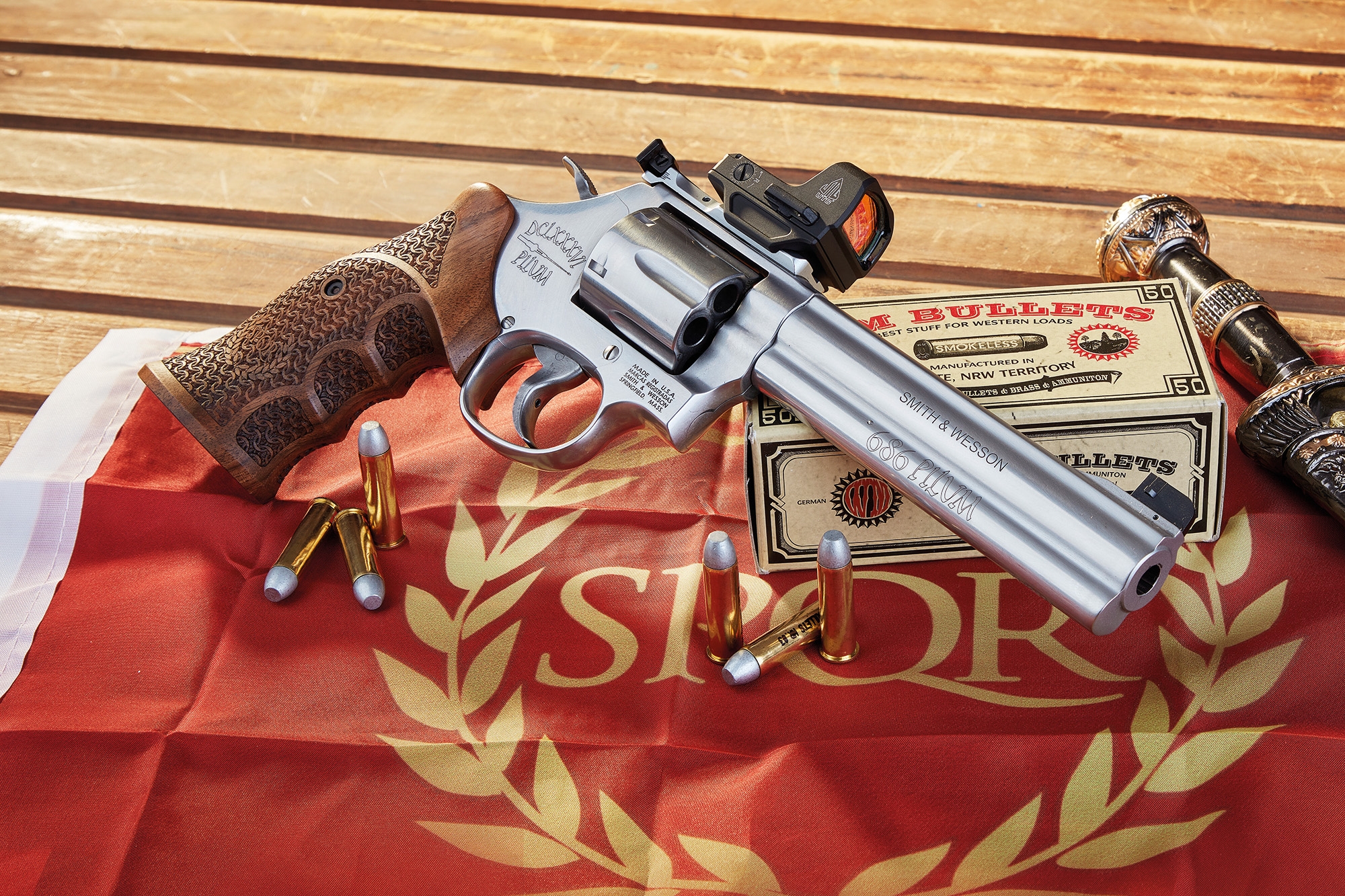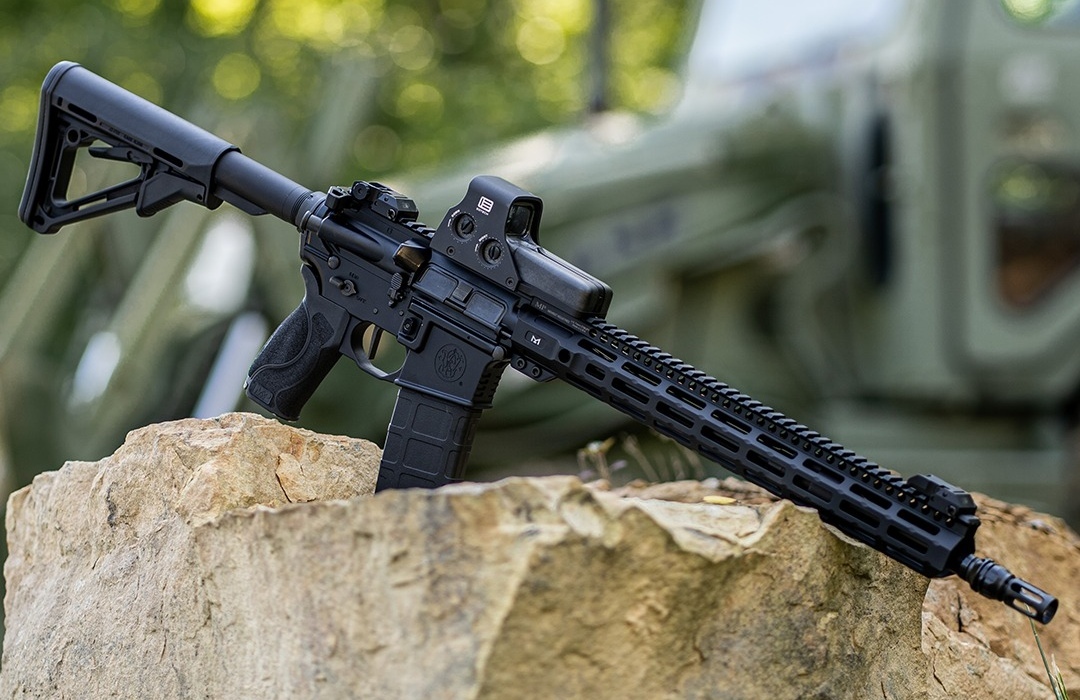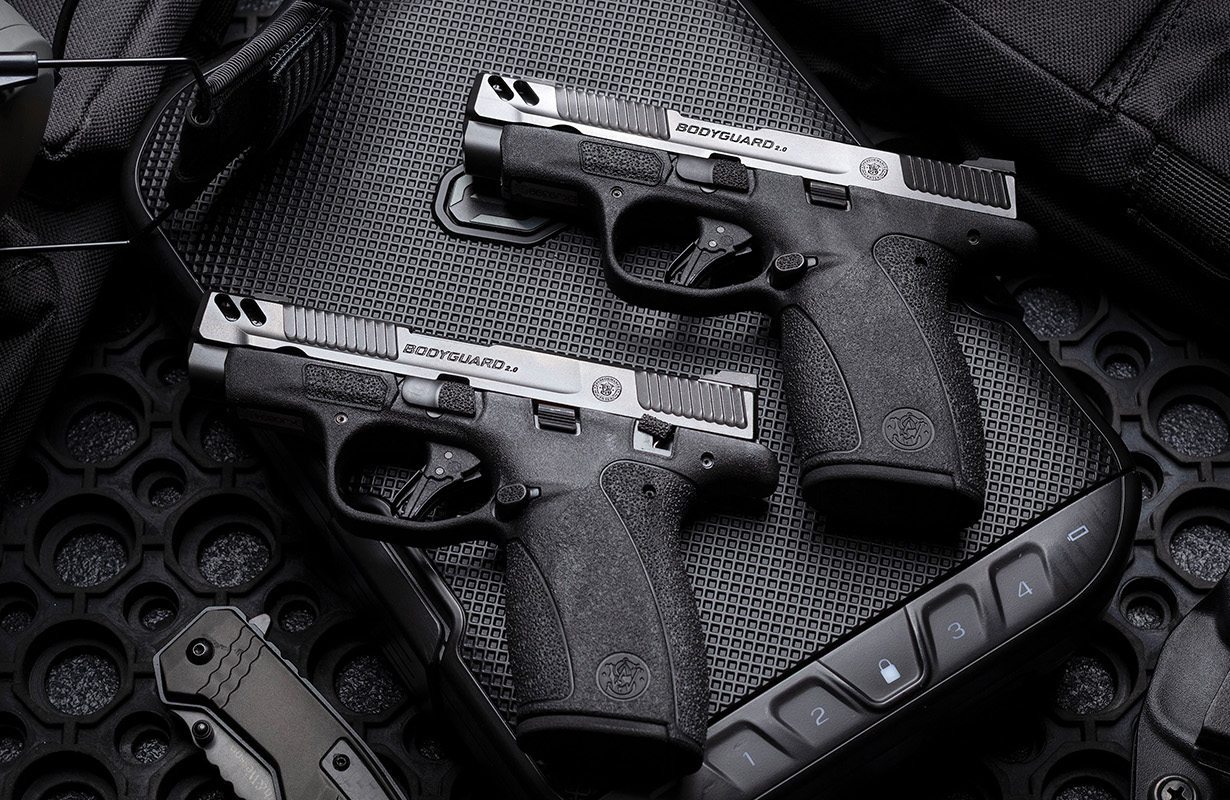There are handguns at the sight of which the conscience of even veteran editors instantly prompts an imperative along the lines of: "Wash your hands!". How would this flawless, high-gloss finish look when touched with oily or even sweaty fingers otherwise? Wiped clean and dry, it looks like a black mirror. Add to this the absolutely harmonious lines of this revolver from Smith & Wesson, the aesthetics of which are enough to silence even hardened technocrats. Perhaps not everything was better in the past. But often enough, the appearance of many products had to be adapted to their intended purpose and not diluted by a design that was as effective as possible in terms of advertising. And such an item, when manufactured with coherent, high-quality craftsmanship, immediately possesses a certain aura of something truly special. And that's exactly how this project was conceived in 1955; long before certain movies, it was indeed the "The Most Powerful Handgun in the World"! We're talking, of course, about the legendary revolver that most Smith & Wesson fans know today as the Model 29.
A look back at the S&W Model 29 – Without Dirty Harry
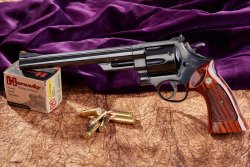
And the often-mentioned Elmer Keith, one of the (many) tireless protagonists of performance-enhanced .44 Special loads, should also be mentioned briefly. This is not to diminish his pioneering work on the very powerful yet safe .44 Magnum load, which brought such phenomenal performance from the early Smith & Wesson N-frame "Hand Ejectors". Nor did he influence Smith & Wesson to make a revolver designed to withstand this high gas pressure for long-term use.
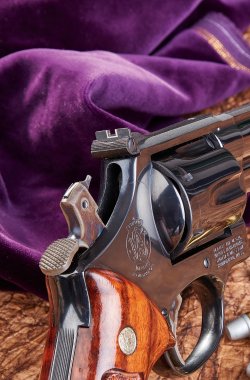
But to this day, so-called "wildcats" continue to be produced every year. These are special cartridges made in small series on a private and non-industrial initiative, which are often presented with great fanfare. However, due to the lack of economic mass production, many of them quickly disappear into oblivion. It was the lure of the big business that both Carl Hellstrom of Smith & Wesson and R.H. Coleman of Remington Arms recognised, prompting these two important company representatives to form what is now known as a "joint venture". And without mass production, the ".44 Magnum" designation as both a cartridge and a revolver might never have become so successful. So Remington produced the .44 Magnum and Smith & Wesson contributed five (sic!) specially heat-treated Hand Ejector N-frame revolvers from 1955 to early 1956.
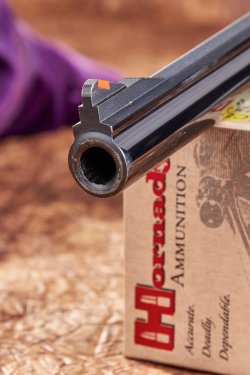
The first .44 Magnum revolvers from S & W ran under the rather dry designation NT-430, "N" for the frame size and "T" for the target configuration. The number 430 stood for the barrel diameter of 0.43 inches, i.e. almost 11 millimetres. The first series production runs of the NT-430 comprised around 3,100 units. Initially, there were only two technically different patterns, one with a 6.5" barrel and one with a 4" barrel, as well as two finish options, blued and nickel-plated. The Magnum dream of the time cost a hefty 135 US dollars. That sounds like very little, but corresponds to today's purchasing power of around 1,600 dollars. But not only did it offer plenty of "Magnum power", but also an excellently manufactured revolver. The NT-430 only became the later Model 29 through the simple numbering of all revolver models carried out by Smith & Wesson in 1957. The model designations, some of which were quite long and explained certain specific features, were thus history. However, this in no way affected the very special success story of the Model 29 series. After all, it was not only performance-hungry sports shooters who wanted a revolver in that calibre. In the USA, hunting with handguns is widespread and the .44 Magnum made it possible to hunt larger game as well as at longer distances than previously possible.
The .44 Magnum Smith & Wesson Model 29 in detail
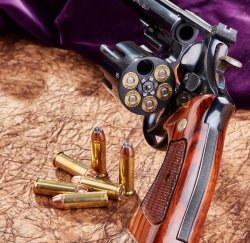
Even in the age of the .500 S&W Magnum, the dimensions and weight of the test gun, a Model 29-2, are still impressive: almost three pounds are spread over a length of almost 36 centimetres. With a loaded cylinder, it weighs over 1,600 grams. Despite the long 8 3/8" barrel, this revolver is rather neutral in the hand, i.e. neither grip- nor barrel-heavy. Even at first glance, it is clear that the very high-quality workmanship was also an essential part of this success story, which continues to this day. The beautifully patterned wooden grips have a clear coating similar to spar varnish. The connecting screw between the two grips is not really necessary, as they are firmly attached to the frame.
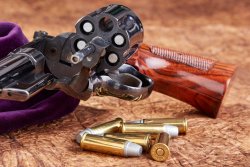
The cylinder gap is around 0.15 mm, timing and alignment are flawless. All corresponding parts run like the often quoted clockwork. There is not even a hint of creeping or scratching when the hammer is released. The 12-mm wide, longitudinally serrated trigger blade protrudes slightly beyond the trigger guard – it couldn't be wider. The "target" claim is also supported by the wider, checkered hammer spur. Under reasonable lighting conditions, the sights and trigger characteristics of this gun will certainly still allow experienced handgun shooters to take suitable game. This is especially true in areas that are known as "brush country" in the USA. These are areas criss-crossed by mostly dry streams and covered with dense and often thorny vegetation. Due to the largely restricted visibility, it often makes more sense to use a powerful handgun than a rather cumbersome rifle.
On the shooting range with the S&W Model 29
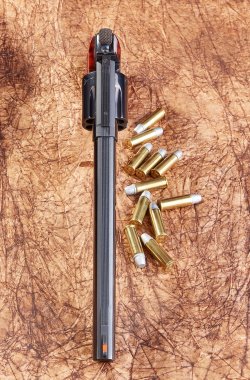
This is only possible with respect. Because the approximately 1,500 grams of trigger pull weight are often overcome faster than planned. If crisply loaded factory cartridges are then fired in the chambers instead of weak loads, the classic revolver can react quite snappily. This is because today's standard "soft" features such as rubber grip panels or a backstrap that is at least concealed by grip panels are not available as standard. If you don't grip tightly when firing, you will get hit in your face. The leverage effect of the long, thin barrel is enormous. The .44 Model 29 "Classic" series, with the full barrel lug extending to the muzzle, has not become so popular with sport shooters since 1991 for nothing. The leverage effect of the very long, slim barrel in combination with crisply loaded factory cartridges also pushed the shooting machine to its limits.
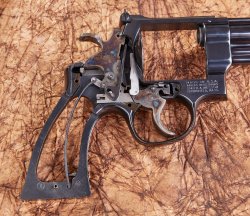
Weakly loaded factory cartridges such as the .44 GECO Hexagon deliver groupings of around 50 millimetres. This explains the well-known phenomenon that the typical barrel length of 6½" of the heavier Classic variant usually delivers better groupings than the long and thin-barrelled ancestors. It is therefore no wonder that the .44 disciplines are mostly contested by reloaders in all relevant umbrella organisations. Shy shooters who do not reload their own ammo can only buy cartridges in .44 Special. However, this makes as much sense as driving a Porsche exclusively in 30 km/h zones.
Smith & Wesson Model 29-2 technical specifications
Model: | Smith & Wesson 29-2 |
Caliber: | .44 Magnum |
Capacity: | 6 rounds |
Barrel Length: | 8 3/8"/212 mm |
Sight Radius: | 193 mm |
Rear Sight Notch: | 3.0 mm |
Front Sight Width: | 3.0 mm |
Trigger Pull Weight: | 1,500 g (SA mode) approx. |
| Dimensions: (LxWxH): | 360x44x157 mm |
Weight: | 1,475 g |
Features: Black high-gloss bluing, Gonçalo Alves wooden grips, wide hammer spur and wide sports trigger. White outlined micrometre rear sight, fixed ramp front sight. | |
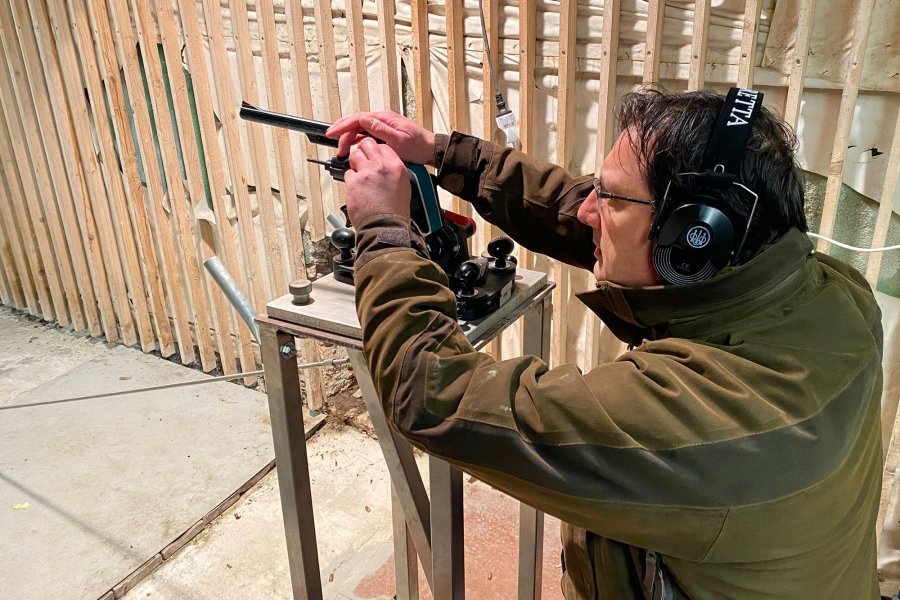
Test summary of the Smith & Wesson Model 29-2 in .44 Magnum
For competition? With factory cartridges and competitors with "full-lug barrels", there would be no hope. Only reloaders would have a real chance of scoring points with reduced-power yet precise cartridges. After all, a MIM trigger still has to deliver these trigger characteristics. And the rest of the workmanship of the old Model 29 is also above today's standard. However, this certainly applies not only to Smith & Wesson firearms, but also to those of most competitors from the era. This also explains why used Model 29s from the early years are rarely found on the market today and why prices are comparatively high. The fact that there are still enthusiasts of the Model 29 without full barrel lug is proven not least by the fact that Smith & Wesson revived it a few years later in the Classics series as the Model 29-10 after the "official" production stop in 1999.


